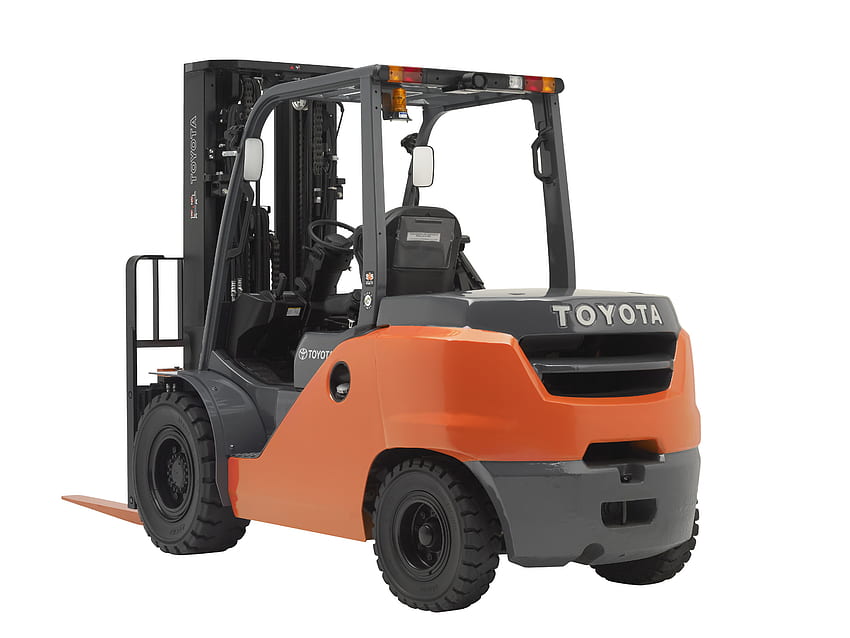Maximizing Uptime: Essential Tips for Toyota Forklift Service and Repair
Maximizing Uptime: Essential Tips for Toyota Forklift Service and Repair
Blog Article

Maintaining the performance and reliability of your Toyota forklift is crucial for ensuring maximum uptime in your operations. Forklifts play a vital role in material handling, and any downtime can lead to significant losses in productivity. To keep your equipment running smoothly, understanding the importance of regular service and timely repairs is essential.
Toyota forklifts are renowned for their durability and efficiency, but like any machinery, they require proper care to operate at peak performance. In this article, we will explore essential tips for Toyota forklift service and repair, helping you implement best practices that will extend the life of your equipment and minimize unexpected breakdowns. By following these guidelines, you can ensure that your forklifts remain in prime condition, ready to tackle the demands of your business.
Understanding Toyota Forklift Maintenance
Toyota forklifts are known for their reliability and efficiency, but maintaining them is crucial to ensure they continue to perform at their best. Regular maintenance can help prevent unexpected breakdowns and extend the lifespan of the equipment. Understanding the key components of Toyota forklift service repair is essential for any facility that relies on these machines to maintain productivity.
Routine inspections should be a part of your maintenance schedule. This includes checking hydraulic fluid levels, inspecting tires for wear, and ensuring that all electrical connections are secure. Catching small issues before they escalate can save time and money in the long run. Make sure to keep detailed records of all maintenance activities to track performance and identify any recurring problems.
In addition to routine checks, adhering to Toyota's recommended service intervals is vital. This ensures that major components such as the engine, brakes, and transmission are examined and serviced as needed. By following these guidelines, operators can maximize uptime and minimize the risk of costly repairs that could disrupt operations.
Common Service Issues and Solutions
One of the most frequent service issues encountered with Toyota forklifts is battery failure. This can stem from insufficient maintenance, such as not properly charging the battery or failing to clean the terminals. To address this issue, ensure that batteries are charged regularly and inspected for corrosion. Regular maintenance schedules should include checking the battery fluid levels and cleaning terminals to enhance longevity.
Another common problem is hydraulic system leaks, which can significantly impact the machine's performance. These leaks often occur due to worn seals or damaged hoses. To solve this issue, it's essential to regularly inspect the hydraulic components and replace any worn parts promptly. Keeping an eye on fluid levels can also help detect leaks early, minimizing downtime and repair costs.
Forklift performance issues can also arise from improperly maintained tires. Worn or damaged tires can lead to poor traction and uneven load handling. To combat this, conduct routine inspections and replace tires as necessary. Ensuring that the right type and pressure of tires are used for specific applications can significantly improve forklift efficiency and safety.
Sign Up
Importance of Regular Inspections
Regular inspections of Toyota forklifts are crucial for maintaining optimal performance and safety in the workplace. These inspections allow operators and maintenance personnel to identify potential issues before they escalate into costly repairs or accidents. By prioritizing routine checks, businesses can ensure that their equipment runs smoothly, minimizing downtime and enhancing productivity.
In addition to preventing major repairs, consistent inspections help to prolong the lifespan of forklifts. Identifying wear and tear on critical components early on allows for timely replacements or fixes, which can save significant expenses in the long run. This proactive approach to maintenance fosters a culture of safety and responsibility, which is essential in environments where heavy machinery is in use.
Furthermore, regular inspections contribute to compliance with safety regulations and standards. Keeping Toyota forklifts in top condition not only protects the workers operating the equipment but also helps businesses meet legal requirements. This not only mitigates the risk of fines but also promotes a reputation for safety and reliability, further enhancing customer trust and satisfaction.
Choosing the Right Replacement Parts
Selecting the appropriate replacement parts for your Toyota forklift is crucial to ensuring optimal performance and longevity. When sourcing parts, always prioritize genuine Toyota components over generic alternatives. Genuine parts are specifically designed for your forklift’s model and come with a guarantee of quality, which can significantly reduce the risk of further issues arising from incompatibility or poor workmanship.
Another important aspect to consider is the reputation of the supplier. It is essential to work with authorized dealers or reputable suppliers who specialize in Toyota forklift service repair. These vendors typically provide not only original parts but also support for installation and maintenance, ensuring that you receive the best service possible for your equipment. Verifying certifications and customer reviews can help you make a more informed choice.
Lastly, always keep an inventory of critical parts that are prone to wear and tear. Having essential components on hand can minimize downtime during repairs, allowing for quicker turnaround and maintaining productivity. Regular maintenance can also help predict when certain parts might need replacement, enabling you to stock up proactively and ensure your forklift remains operational when you need it most.
Report this page